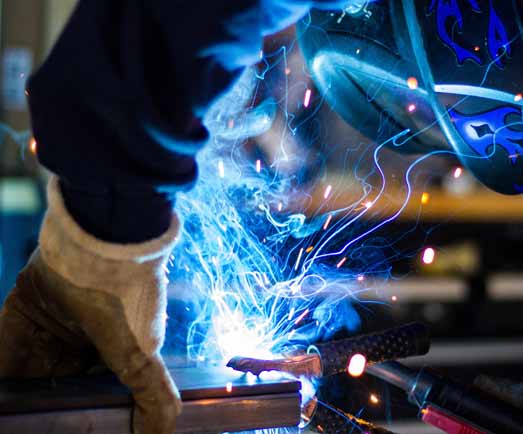Oxy-fuel welding (or oxyacetylene welding, oxy welding, or gas welding) and oxy-fuel cutting are processes that combine fuel gases and oxygen to weld and cut metals, respectively. Pure oxygen, instead of air, is used to increase the flame temperature allowing localized melting of the material (typically steel) without the need for a special environment. Common fuels include propane (burning at up to 4087°F), hydrogen (burning at up to 5072° F) and acetylene (burning at up to 6332°F).
Oxy-fuel is one of the oldest welding processes, besides forge welding. In recent years, it has been replaced in most industrial uses due to various Arc welding methods offering more consistent weld properties and faster application. Gas welding is still used for metal-based artwork and in smaller shops, as well as situations where accessing electricity (via an extension cord or portable generator) would present difficulties.
In oxy-fuel welding, a welding torch is used to weld metals. Welding metal results when two pieces are heated to a temperature that produces a shared pool of molten metal. The molten pool is generally supplied with additional metal filler. Filler material varies depending upon the metals to be welded.


A ventilation system is required on all welding and metal cutting operations. However, continuous ventilation can be very expensive and many plants are trying to minimize air changes as part of an energy conservation program. When fumes are created faster than they are exhausted, dangerous or toxic fume levels can accumulate. A properly designed and installed Gas Detection / Life Safety System can monitor both fume levels as well as ventilation – increasing ventilation rates when exhaust levels increase eliminating the need for continuous movement of air at high levels.
Ino-Tek focuses on the design, installation and service of Code-Compliant Gas Detection and Hazardous Material Emergency Alarm / Life Safety Systems. Contact Ino-Tek to assist you in improving the safety of welding and metal cutting operations.
Whether you are building a new facility or have an existing one, talk to one of our Field Service Engineers to make sure it meets all compliance requirements.
